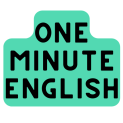Practice English or Spanish with AI here
For all intents and purposes, “there is more than one” is the correct grammatical structure. “There are more than one” is incorrect. This is because “one” is a singular noun and therefore the verb “to be” should reflect agreement. This may be perplexing because the phrase itself suggests the plural.
While it may seem confusing at the outset, it’s not. Just remember that the number must agree in conjunction with the verb. Therefore, it may seem overwhelming. But once you get used to it, will become almost second nature.
There “Is” More Than One
Whenever “one” rests within the sentence, the correct usage will always be “there is more than one.” Even though the phrase itself suggests plurality, the grammatical sentence structure is singular.
There is more than one.
There is more than one person coming.
There is more than one tree in the backyard.
There “Are” More Than One
The confusion people have with number agreement and confusing it with plurality leads many to use “there are more than one.” This is incorrect agreement because “are” is plural and “one” is singular.
There are more than one.
There are more than one person coming.
There are more than one tree in the backyard.
With these examples, and you say them aloud, it simply doesn’t sound right. The extraneous text following the phrase “there are more than one” doesn’t affect numerical agreement in the grammatical sense.
Exchanging “One” for Plural Nouns
The only time you would use “are” is if “one” is plural or there’s another numerical noun that is plural. However, if you add an –s to “one,” then it will require an article or pronoun for clarification to indicate proper comparison.
There are more than the ones.
There are more than these ones outside.
There are more than those ones in the city.
Plural Numbers
The caveat in the difference between “there is more than one” versus “there are more than one” is when you use a number that’s plural in nature and in a grammatical sense. Such as is the case with two, three, four, and etc. But, you can use either “is” or “are” because the word and its implication are plurals, which means both are correct.
There is more than two.
There are more than two.
There is more than three.
There are more than three.
There is more than ten.
There are more than ten.
The only time you will run into problems with this is if you use the actual number value rather than the written out numeric when it contains two or more digits. In this instance, you will use “are” for proper sentence structure.
There is more than 10.
There are more than 10.
Conclusion
The main takeaway here is that when you see “one” or any number written out, you will use “there is more than.” In the case of “ones” or an actual digit over 10, you will use “are.”
- 10 Words or Phrases “To Make Her Feel Special” - October 16, 2024
- Synonym Generator - September 11, 2024
- [BrutallyHonest] Langua AI Review – Can you learn a language with AI? - April 23, 2024

